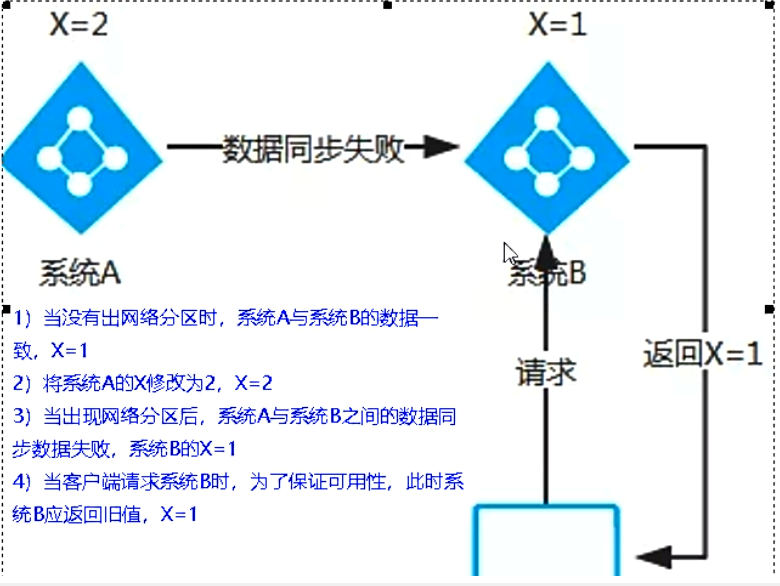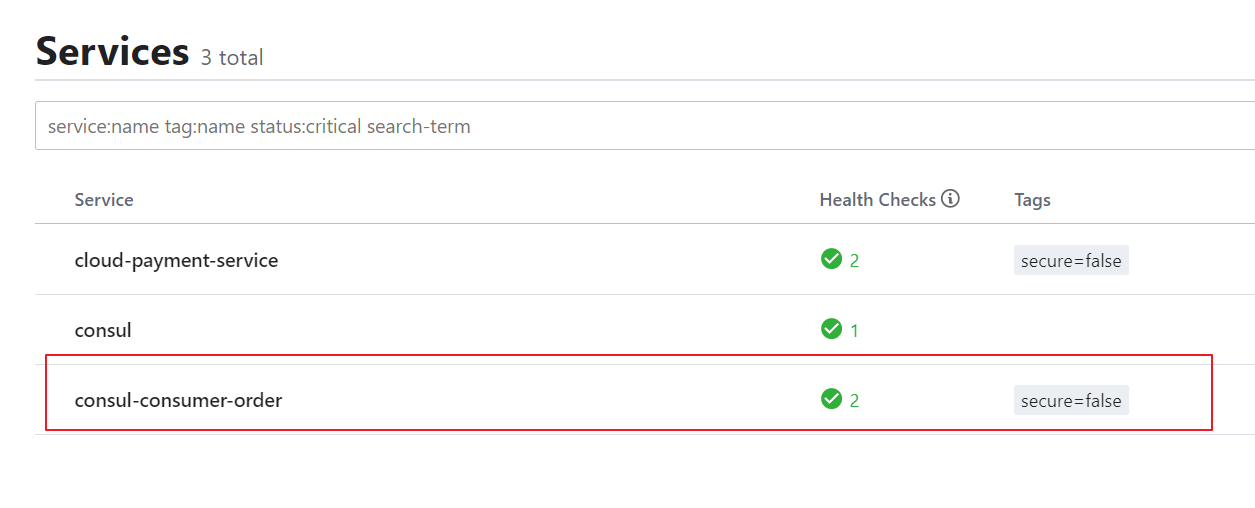一、Consul简介
1、Consul是什么
Consul是一套开源的分布式服务发现和配置管理系统,有HashiCorp公司使用GO语言开发。
提供了微服务系统中的服务治理,配置中心,控制总线等功能,这些功能中的每一个都可以根据需要单独使用,也可以一起使用以架构全方位的服务网格,总之Consul提供了一种完整的服务网个解决方案。
它具有很多优点,包括:基于raft协议,比较简介;支持健康检查,同时支持Http和DNS协议 支持跨数据中心的WAN集群提供图形界面 跨平台,支持Linux,mac windows
2、Consul能干吗
- 服务发现
- 健康检测
- KV存储
- 多数据中心
- 可视化WEB界面
3、下载
二、安装并运行Consul
下载windows后,解压后就一个文件 consul.exe 文件
在该目录下打开 cmd 输入 consul --version 就可以查看consul的版本
Consul 路径: D:\Program Files\Consul
启动consul:consul agent -dev
访问控制界面:http://localhost:8500
1、服务提供者
创建 cloud-providerconsul-payment8006 模块
1.1 添加依赖
<dependencies><dependency><groupId>org.springframework.cloud</groupId><artifactId>spring-cloud-starter-consul-discovery</artifactId></dependency><dependency><groupId>com.springcloud</groupId><artifactId>cloud-api-commons</artifactId><version>${project.version}</version></dependency><dependency><groupId>org.springframework.boot</groupId><artifactId>spring-boot-starter-web</artifactId></dependency><dependency><groupId>org.springframework.boot</groupId><artifactId>spring-boot-starter-actuator</artifactId></dependency><dependency><groupId>org.springframework.boot</groupId><artifactId>spring-boot-devtools</artifactId><scope>runtime</scope><optional>true</optional></dependency><dependency><groupId>org.projectlombok</groupId><artifactId>lombok</artifactId><optional>true</optional></dependency><dependency><groupId>org.springframework.boot</groupId><artifactId>spring-boot-starter-test</artifactId><scope>test</scope></dependency></dependencies>
1.2 写yaml
server:port: 8006spring:application:name: cloud-payment-servicecloud:consul:host: localhostport: 8500discovery:service-name: ${spring.application.name}
1.3 主启动类
@EnableDiscoveryClient@SpringBootApplicationpublic class ConsulMain8006 {public static void main(String[] args) {SpringApplication.run(ConsulMain8006.class,args);}}
1.4 业务类
@RestControllerpublic class PaymentController {@Value("${server.port}")private String port;@RequestMapping("/get/Payment/{id}")public CommonResult get(@PathVariable Long id){return new CommonResult(200,"",port);}}
1.4 测试

2、服务消费者
创建 cloud-consumerconsul-order80 模块
2.1 添加依赖
<dependencies><dependency><groupId>org.springframework.cloud</groupId><artifactId>spring-cloud-starter-consul-discovery</artifactId></dependency><dependency><groupId>com.yixuexi.springcloud</groupId><artifactId>cloud-api-commons</artifactId><version>1.0-SNAPSHOT</version></dependency><dependency><groupId>org.springframework.boot</groupId><artifactId>spring-boot-starter-web</artifactId></dependency><dependency><groupId>org.springframework.boot</groupId><artifactId>spring-boot-starter-actuator</artifactId></dependency><dependency><groupId>org.springframework.boot</groupId><artifactId>spring-boot-devtools</artifactId><scope>runtime</scope><optional>true</optional></dependency><dependency><groupId>org.projectlombok</groupId><artifactId>lombok</artifactId><optional>true</optional></dependency><dependency><groupId>org.springframework.boot</groupId><artifactId>spring-boot-starter-test</artifactId><scope>test</scope></dependency></dependencies>
2.2 yaml
server:port: 80spring:application:name: consul-consumer-ordercloud:consul:host: localhostport: 8500discovery:service-name: ${spring.application.name}
2.3 主启动类
@SpringBootApplication@EnableDiscoveryClientpublic class OrderConsulMain80 {public static void main(String[] args) {SpringApplication.run(OrderConsulMain80.class,args);}}
2.4 配置类
添加 RestTemplate 组件
@Configurationpublic class MyConfig {@LoadBalanced@Beanpublic RestTemplate restTemplate(){return new RestTemplate();}}
2.5 业务类
远程调用的业务类
@RestControllerpublic class PaymentController {@Autowiredprivate RestTemplate restTemplate;@RequestMapping("/consumer/payment/get/{id}")public CommonResult<Payment> get(@PathVariable("id") Long id){String url = "http://cloud-payment-service/payment/get/" + id;return restTemplate.getForObject(url,CommonResult.class);}}
2.6 测试
三、三个注册中心异同点
1、 CAP 概念
C:Consistency 强一致性
A:Availability 可用性
P:Partition tolerance 分区容错
CAP 理论关注粒度是数据,而不是整体系统设计的策略。
2、经典CAP图
最多只能同时较好的满足两个
CAP理论的核心是:一个分布式系统不可能同时很好的满足一致性,可用性和分区容错性着三个需求,因此根据CAP原理将NoSQL数据库分成了满足CA原则,满足CP原则和满足AP原则三大类:
- CA-单点集群 满足一致性,可用性的系统,通常在可拓展性上不太强大。
- CP-满足一致性,分区容忍比的系统,通常性能不是特别高。
- AP-满足可用性,分区容忍性的系统,通常可能对一致性要求低一些。
2.1 AP架构(Eureka)
当网络分区出现后,为了保证可用性,系统B可以返回旧值,保证系统的可用性。
结论:违背了一致性C的要求,只满足可用性和分区容错,即AP
2.2 CP架构
当网络分区出现后,为了保证一致性,就必须拒接请求,否则无法保证一致性
结论:违背了可用性A的要求,只满足一致性和分区容错,即CP



